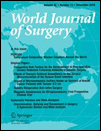First Do No Harm: Predicting Surgical Morbidity During Humanitarian Medical Missions
The views expressed in this article are those of the authors and do not reflect the official policy or position of the Department of the Navy, Department of Defense, or the United States Government.
Abstract
Background
Despite good intentions, humanitarian surgical missions are unavoidably linked to some degree of complication. We hypothesized that the American College of Surgeons Surgical Risk Calculator (ACS-SRC) could estimate the risk of complications of procedures performed during the US Navy’s Pacific Partnership 2015 (PP15) mission.
Methods
Patient information and surgical details recorded during PP15 were entered into the ACS-SRC. Risks of complications for each procedure were calculated. Receiver operating characteristics and Brier scores were calculated to compare the predicted outcomes to the observed complications.
Results
Of the 174 unique procedures performed during PP15 (representing 465 patients), 99 were found in the ACS-SRC (representing 256 patients). Risk calculations for PP15 were: 1.5% risk (IQR 0.9, 2.4) of “serious” complications and 2.0% risk (IQR 1.3, 2.8) of “any” complication. ACS-SRC specific risks were calculated as follows: pneumonia 0.1%, cardiac 0.0%, surgical site infection (SSI) 0.6%, urinary tract infection 0.2%, venous thromboembolism 0.1%, renal failure 0.0%, OR return 0.9%, and death 0.0%. The only specific ACS-SRC complication observed was “OR return” (0.35%) and SSI (0.35%). The observed PP15 rates for “serious” or “any” complications (ACS-SRC definition) were 0.70% (2/285) each. Receiver operating characteristics for ACS-SRC for predicting “serious” or “any” complication were 0.743 (p = 0.118) and 0.654 (p = 0.227), respectively.
Conclusions
Although the ACS-SRC over-predicted risk compared to observed outcomes, it may offer a good starting point for humanitarian surgery risk calculation. Observed outcomes may be limited by loss-to-follow-up bias. Emphasis should be placed on establishing patient follow-up as part of humanitarian surgical mission planning and execution.




